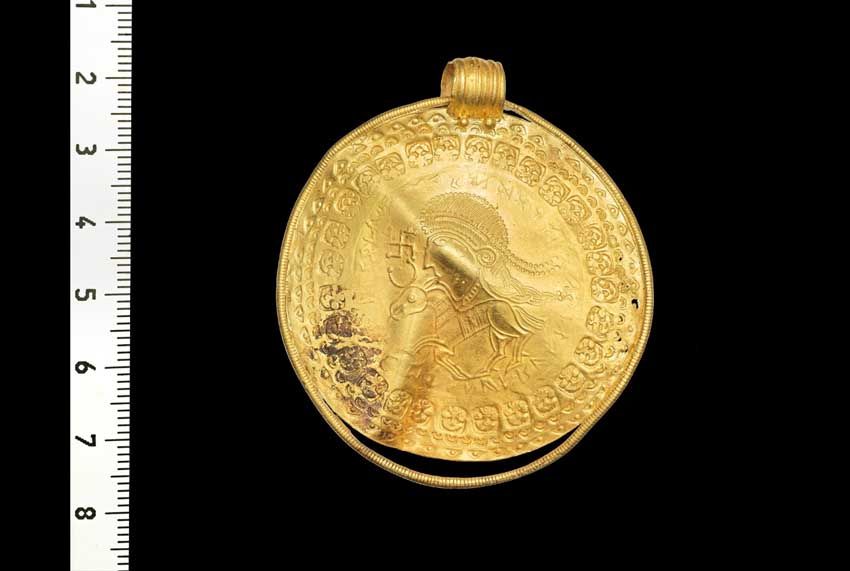This gold pendant from the 5th century AD is the earliest known inscription that mentions and features an image of the Norse god Odin. Photo/Vejle Conservation Center/National Museum of Denmark
This gold pendant from the 5th century AD is the earliest known inscription that mentions and features an image of the Norse god Odin. This pendant is technically known as a bracteate and is made of stamped fine gold.
Archaeologists have assessed the medallion to be 150 years older than previous artifacts known to mention Odin’s Norse mythology. “This is the first time in the history of the world that Odin’s name has been mentioned,” Lisbeth Imer, a runologist and author at the National Museum of Denmark, told Live Science on Monday (3/13/2023).
The inscription, written in letters called runes, says “He is Odin’s man” and the name “Jaga” or “Jagaz” in early Norse forms. It is thought to refer to its owner, an Iron Age chieftain or king, who may have claimed the god as an ancestor.
“I think these words refer to the central motif of a man with a horse, representing a local character or king, who presents himself as a descendant of the king of gods and the god of kings, Odin. We have other literary evidence that kings liked to portray themselves as descendants of gods,” Imer said.
Imer and his colleague, linguist Krister Vasshus, spent more than a year deciphering the runic inscriptions on the bracteate. This treasure is part of a magnificent gold hoard discovered in Jutland, Denmark in 2021.
The hoard contained nearly 2.2 pounds or 1 kilogram of gold and is now known as the “Vindelev hoard” after the name of a nearby town. In Norse mythology, Odin is the king of the gods; the god of death, wisdom, magic and runes; and the “all-father” of gods and men.

“Amateur problem solver. Hipster-friendly alcohol lover. Beer buff. Infuriatingly humble tv geek.”






